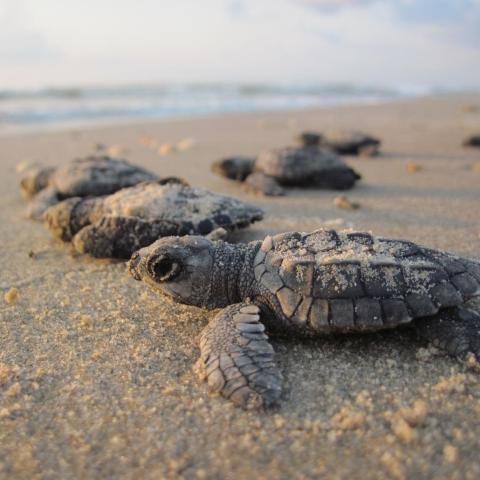
In the 1920s anglers would return home with abundant catches of sawfish/State of Florida
There once was a time, many decades ago, when anglers who headed to the marine waters of Florida returned home with prodigious catches, both in terms of numbers of fish and species, as well as in size of fish. Among the species once numerous was the smalltooth sawfish, an odd-looking fish that wears a "distinct rostrum—a long, flat snout edged with teeth—that looks like a saw."
These fish, while once common from Texas to North Carolina, are now one of the most endangered sawtooth species in the world. Today they are just found in waters off Florida, including waters of Biscayne and Everglades national parks. But a study by scientists from the University of Miami and the National Oceanic Atmospheric Administration has found that the species just might be growing in number.
Those findings are part of a NOAA initiative to support and enhance the recovery of smalltooth sawfish in and around Biscayne Bay, a coastal lagoon off Miami, that was designated a Habitat Focus Area by NOAA in 2015.
A shark-like ray, smalltooth sawfish (Pristis pectinata) are unique for their long flat rostra with roughly 22-29 teeth on either side that is used to detect and catch prey. The species can reach 16 feet in length. NOAA estimates that smalltooth sawfish populations in U.S. waters have declined by as much as 95 percent due to a combination of overfishing, bycatch in fishing gear, and habitat loss from increasing coastal development.

Biscayne National Park rangers in 2018 saved this sawfish, which was entangled in lobster trap rope/NPS
The research team compiled sighting records dating as far back as 1895 and recent encounters of sawfish in the Biscayne Bay Habitat Focus Area.
"Our analysis showed sightings have increased exponentially in recent decades, with some individuals even appearing to be making returning annual visits," said Laura McDonnell, the study's lead author and a PhD student at UM Abess Center for Ecosystem Science & Policy and researcher at the University of Miami Rosenstiel School. "These findings demonstrate that smalltooth sawfish have been using these waters with some regularity, largely unnoticed prior to the compilation of these records.
"However, the extent to which sawfish use Biscayne Bay and reason for their occurrence remains unknown," said Joan Browder, a fisheries biologist at NOAA's Southeast Fisheries Science Center and senior author of the study. "Understanding this would be a valuable next research step."
Many of the smalltooth sawfish documented in this study were found in waters very close to Miami, where they were exposed to high levels of pollution, boat traffic, and fishing.
"These results highlight a need to understand the effects of coastal urbanization on smalltooth sawfish and the conservation implications for this and other endangered species using the area," said Neil Hammerschlag, research associate professor at the UM Rosenstiel School and UM Abess Center for Ecosystem Science & Policy and co-author of the study.
"Given the documented use of smalltooth sawfish in and around Biscayne Bay, we hope the area will receive informative signage to help inform the public about their endangered status, the importance of reporting encounters, and the dangers of harming sawfish," said McDonnell.




 Support Essential Coverage of Essential Places
Support Essential Coverage of Essential Places






